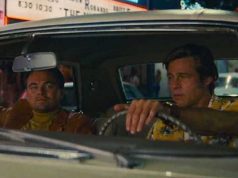“Saving Mr. Banks” tells the heartwarming story of how icy authoress P.L. Travers was charmed by Walt Disney and his merry men into letting them turn her Mary Poppins books into a movie, and how she came to love and appreciate their artistic vision even though it was different from hers.
You’ll notice I said the story is heartwarming, not true. It isn’t. Travers did relent in granting the film rights to Disney (obviously), but she hated the movie his team came up with. She loathed the whole experience so much that she wrote it into her last will and testament that if a Mary Poppins stage play ever came to be, no one involved with the 1964 film could be associated with it. (That’s why the 2004 live musical’s new songs weren’t written by the Sherman brothers, even though they were still alive and active.)
There’s something vaguely stinky about the Disney studio making a movie about how the Disney studio made “Mary Poppins,” and the prettying up of actual events — the Disneyfication of the story — confirms the odor. Yet I’d be lying if I said I wasn’t moved by “Saving Mr. Banks” when I watched it. Directed by skilled tear-yanker John Lee Hancock (“The Blind Side”), the film has an almost irresistible charm built into it: the prim, formal Travers is played by the flawless Emma Thompson, and everybody’s best friend Walt Disney is played by everybody’s best friend Tom Hanks. Travers could have been too cold and demanding, and Disney could have been too folksy and smooth — but not with Thompson and Hanks making the effort to give the caricatures some life.
The film focuses on the two weeks in 1961 that Travers spent in Hollywood, working with Disney’s people to hammer out a cinematic version of Mary Poppins that Travers could live with. Disney’s script writer, Don DaGradi (Bradley Whitford), and songwriters Robert and Richard Sherman (B.J. Novak and Jason Schwartzman) show her what they’ve come up with; she rejects just about every detail. She hates the songs. She hates the idea of having songs in the film. She doesn’t want any part of it to be animated. She scoffs at the notion of Dick Van Dyke playing Bert. And on and on.
This is interspersed with flashbacks to Travers’ childhood in Australia, where her father (Colin Farrell) works at a bank but is otherwise the total opposite of the stern Mr. Banks of Disney’s “Mary Poppins” — affectionate, doting, playful, irresponsible, and drunk. In a movie that works properly, these flashbacks would explain why Travers is dead-set against the Disney team’s ideas, as well as why she eventually relents. In this movie, however, there is no such explanation. We realize immediately that everything Travers opposed wound up in the “Mary Poppins” we all know and love. So why did she change her mind? “Saving Mr. Banks” can’t explain it. (Maybe because it didn’t happen?)
Besides Thompson and Hanks’ winning performances, there is also Paul Giamatti as an unflappably friendly chauffeur who takes Travers from her hotel to the Disney lot every day. The relationship between these two is the only authentic-seeming one in the film — a testament to the value of fine, committed actors doing the best with what they’re given.
Historical revisionism aside, the film suffers from clunky writing (by Kelly Marcel and Sue Smith) and heavy-handed symbolism. Travers demands that you call her “Mrs. Travers,” not Pamela; Disney insists on being called “Walt,” no matter what; ho ho, what a mismatch! When Travers arrives at her California hotel and finds a fruit basket containing pears, she chucks the pears out the window into the pool, an act that contradicts her stern, reserved demeanor in every single other scene. Why does she hate pears so much? As we later learn in a flashback, it’s because she was out buying pears when her father died. Ugh.
In the end, what works about “Saving Mr. Banks” has nothing to do with “Saving Mr. Banks.” The cast is charming, and the behind-the-scenes process of bringing “Mary Poppins” to fruition makes us think about how much we love “Mary Poppins.” That’s it. The film reflects light from other sources but doesn’t produce any of its own.
C+ (2 hrs., 5 min.; )





